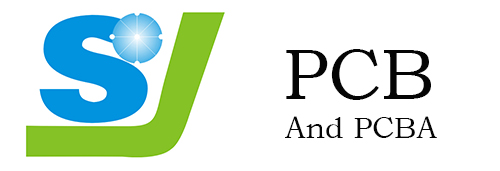1. Placement
Generally speaking, when placing the screen of components such as resistors, capacitors, and tubes, do not use four directions, which will make it very tiring to look at the screen during debugging, maintenance, and welding (the board needs to rotate in several directions).
Therefore, it is recommended to place them in two directions, as shown in the figure below. In this way, viewing the screen is very important.
PCB screen printing
As shown in the figure below, if the density around the component is too high to place the silk screen, you can write the silk screen in the nearby blank space, mark the arrow, and draw a box, which is easier to identify.
PCB screen printing
2. Try not to punch the vias on the silk screen.
As shown in the figure below, the via hole is punched at the figure 8, and after the punching board comes back, you will not be able to tell whether it is R48 or R49.
PCB screen printing
3. Do not press the silk screen on the high-speed signal line (such as clock line, etc.).
This recommendation applies to high-speed signal lines on the top or bottom, as these can be considered microstrip lines.
The speed (phase speed) at which a signal travels on a microstrip line is dependent on the medium. If the silk screen is pressed on the line, as shown in the figure below, the medium will become uneven, causing the phase velocity to change, and finally manifested as impedance discontinuity, which will affect the signal quality.
Of course, the inner signal line will not have this problem.
PCB screen printing
4. The reading direction of the silk screen should be consistent with the using direction.
As shown in the figure below, the reading direction of the screen printing is consistent with the use direction of the chip, mainly during the soldering process to reduce the probability of rever soldering.
Others, like electrolytic capacitors, don't follow this advice because you can specify positive and negative polarity.
PCB screen printing
5. The pin number should be clearly marked on the silk screen.
As shown in the figure, there are 4 pin numbers on the P3 connector, which is convenient for debugging and installation. In addition, it is best to mark where the pins are dense, such as: chips, FPC sockets, etc. At the same time, the reading direction of P3 is consistent with the use direction of the connector.
PCB screen printing
6. Screen printing for special packaging.
For special packages such as BGA and QFN, the size of the silk screen should be exactly the same as the size of the chip (as shown in the figure below), otherwise, it will be difficult to align and affect soldering.
PCB screen printing
7. The silk screen of the mounting hole.
Here, the silk screen of the screw is added near the mounting hole, and the length and the total number of screws are marked at the same time, which is convenient for installation.
PCB screen printing
8. The ambiguity of silk screen printing.
The most commonly used is RS232. Many people will mark RX and TX, but there are also RX and TX on the PC side. When to use a crossover cable and when to use it?
This leads to the ambiguity of screen printing, making people foolish to distinguish.
Here, two arrows have been added to indicate the direction of the signal (as shown in the image below), so you can see at a glance how to connect the wires.
Not only RS232 can do this, others, such as: SPI, with send and receive signal lines, can do this.

